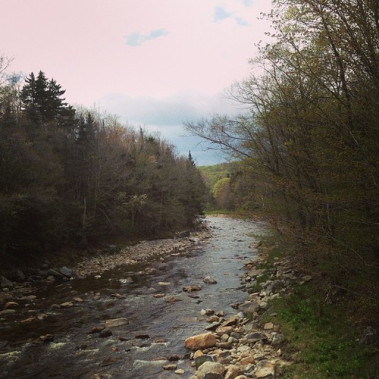Day 2, Thursday, May 11, 2017
Brent and Rich were going to work on my first full day in Hawaii, so I was on my own for the day. I dropped them off and then headed out driving the 1994 Isuzu Rodeo they keep there, with its bouncy shocks and squeaking. This truck was prime high-riding style at 23 years old!
My first destination was the Pu’uhonua o Hōnaunau National Historical Park, previously known as the City of Refuge. It was established in 1955, and was renamed with the correct Hawaiian name and spelling in 2000. An estimated 421,000 people visited in 2016. Even now, the name City of Refuge is still used unofficially, even though it was never technically accurate; it was never really a city. People didn’t live there – there were no permanent residents there.

Pu’uhonua o Honaunau NHP Sign
I watched a ranger talk, presented by a native Hawaiian Ranger; he gave the history of the site. For hundreds of years until the early 19th century, Hawaiians who broke a kapu (one of the ancient laws that was part of a whole series of laws and regulations) received absolution from a priest if they could make it to the place of refuge, or puʻuhonua. The thing is, you had to swim there, because the puʻuhonua couldn’t be reached by land without crossing the royal grounds, and that was off limits. But if you could get there by water, you were pardoned, and could stay there to rest and recover before journeying home.
The park also contains a reconstruction of the Hale o Keawe heiau, the Hawaiian version of a mausoleum, which was originally built by a Kona chief named Kanuha in honor of his father King Keaweʻīkekahialiʻiokamoku (massive bonus points if you can pronounce that!). After the death of Keaweʻīkekahialiʻiokamoku, his bones were buried in the heiau, and more of the nobility of Kona were buried inside until the end of the kapu system in Hawaii. A son of Kamehameha I, the founder and first ruler of the Kingdom of Hawaii, was the last person buried here in 1818. Eventually this heiau was destroyed – the one existing on the site today is a reconstruction.
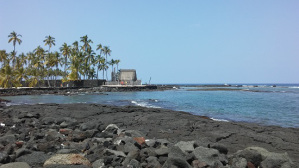 A view of the park
A view of the park  There was some fog in the morning
There was some fog in the morning 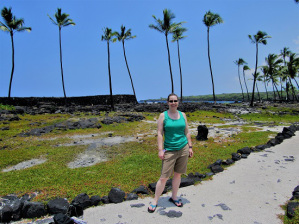 Me at the refuge
Me at the refuge  Statues!
Statues! 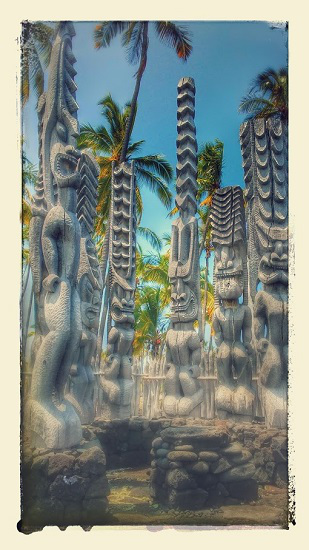 Statues – Stylized
Statues – Stylized
The ranger talk ended with him playing a nose flute – he did a great job too! It was really cool to watch. After the presentation, I explored the site. It has several reconstructed traditional Hawaiian dwellings and structures for visitors to see. You can watch people making tools and traditional items using historic methods. There is also a konane board, which is a strategy game similar to checkers.
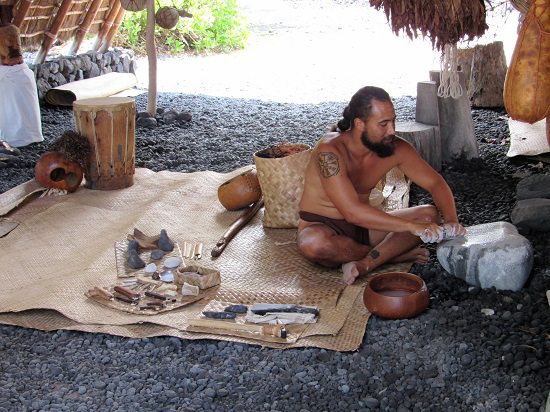
An artisan working in traditional methods
The City of Refuge is right on the water and I was able to walk across the lava rocks to see the fish and shellfish in the water. Sadly, I didn’t see any turtles though… There were several other people there, but it was certainly not crowded. I enjoyed strolling around at my leisure and checking everything out. It was so worth the visit!
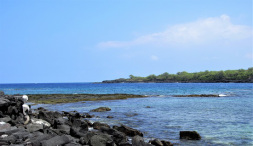 One of the statues overlooking the water
One of the statues overlooking the water 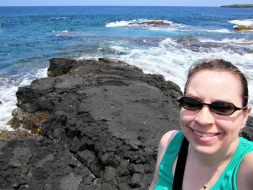 Me on the lava rocks overlooking the ocean
Me on the lava rocks overlooking the ocean 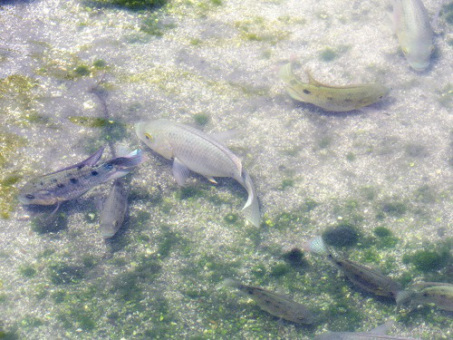 Fish in the Royal Fish Pond
Fish in the Royal Fish Pond 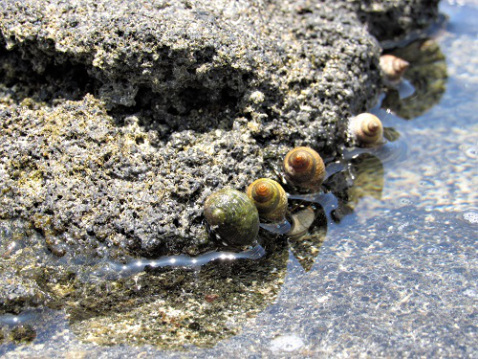 Lots of sea snails
Lots of sea snails 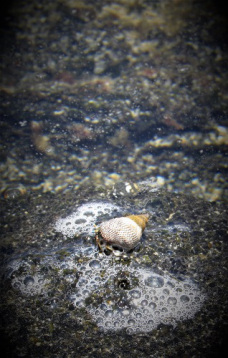 A snail!
A snail!
Costs and Fees: $15 per vehicle at Pu’uhonua o Hōnaunau National Historical Park (free with a National Parks Pass).
Advertisements Share this:
